Competitive Crowing with Roosters
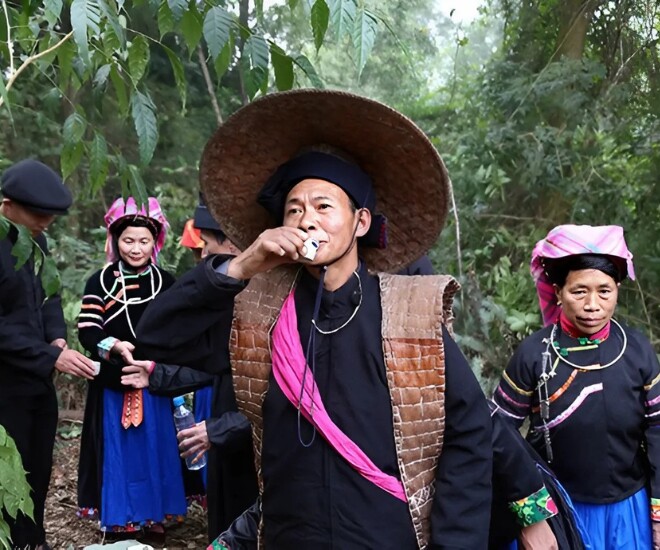
The tradition of singing competitions with roosters usually takes place early on the first day of Tet, as the first rays of sunlight begin to filter through the mountains.
Singers need to listen intently to the rooster’s crow and instantly create lyrics that match the rhythm and pitch. This requires quick wit, flexibility, and improvisational skills. This custom is not only entertaining but also a chance for people to showcase their talent and connection to traditional culture.
Moreover, the custom of singing contests with roosters holds profound spiritual significance. The Pu Péo people believe that if someone can outsing a rooster, their family will be blessed with good fortune, smooth endeavors, and bountiful harvests for the year.
Today, the Pu Péo community continues to preserve this custom of singing competitions with roosters, making it a unique aspect of their cultural life. It serves not only as an occasion for family reunions and festive celebrations but also as a means to preserve and promote their traditional cultural identity amidst modern influences.
Welcoming the New Year with Thunder
The Ơ Đu people, numbering less than a thousand, reside in the upper reaches of the Lam River. They usher in the New Year with the sound of thunder.
The first thunder of the year signals the start of the planting season and significant family and community events for the Ơ Đu. They believe that after death, one’s soul can only find peace when thunder claps. This New Year celebration, marked by thunder, is the most important ritual for the Ơ Đu to pray for favorable weather, prosperous farming and hunting, and to honor their ancestors and deities.
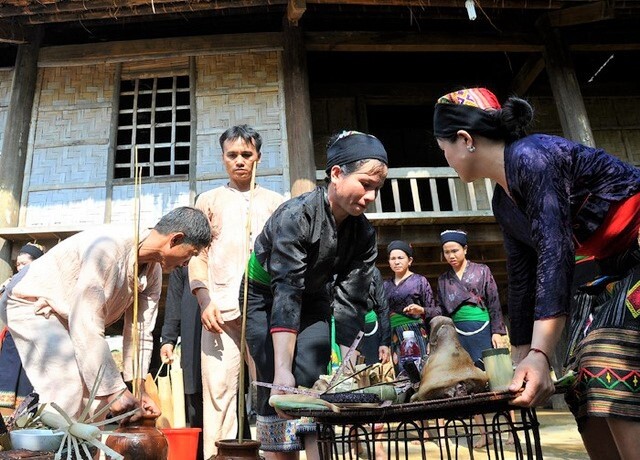
Annually, when the first thunder rolls, the Ơ Đu community holds a festival to mark the beginning of a new year. This is their most significant holiday, celebrated elaborately by the entire community.
The Ơ Đu people share that this festival usually takes place from February to April every year. However, it does not follow a fixed date and is dependent on the first occurrence of thunder in a given year.
The Chăm Phtrong New Year celebration consists of three main rituals: welcoming the thunder at the shaman’s house (considered a messenger of the deities), welcoming the thunder in individual homes, and a community-wide celebration to greet the thunder.
The festivities commence early in the morning with an invitation to the ancestors at the sacred temple on the mountain. The shaman, along with community leaders and family representatives, offer simple yet heartfelt offerings to their forebears.
Following the temple ritual, the community gathers in the communal courtyard to give thanks to the Thunder God, revered for bringing harmonious weather and abundant harvests. Five grand offerings are meticulously arranged, with two dedicated specifically to the Thunder God and their ancestors, while the others are placed around them.
The ceremony commences with a unique ritual of tying threads around wrists, symbolizing “heavenly threads” that safeguard one’s soul. These threads are not to be removed until the next festival season.
After the solemn rituals, the community engages in vibrant cultural activities and games. People dance and sing around the offerings, immersed in the joyous sounds of music, drums, and bamboo tubes or pointed sticks striking the ground, mimicking the sound of thunder. They also perform the ritual of piercing holes and planting seeds, symbolizing their hopes for a bountiful harvest.
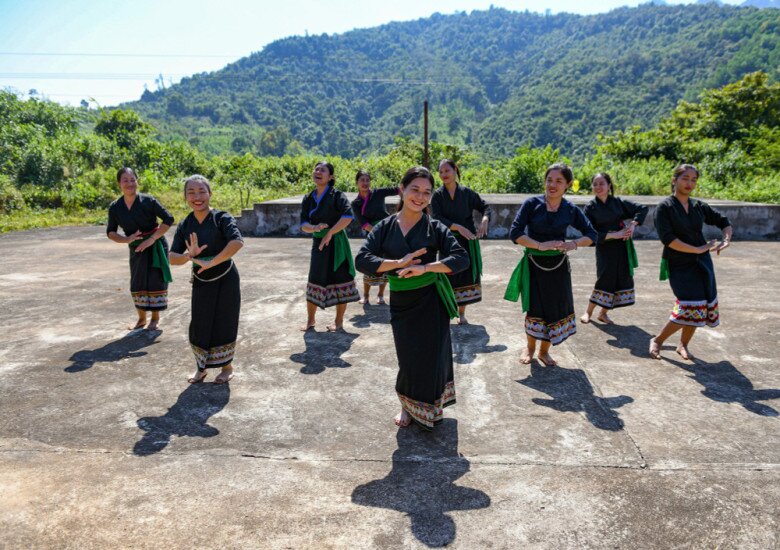
Traditional games such as stilt walking, sack racing, blowpipe shooting, and folk dances further enliven the atmosphere, showcasing the distinct cultural identity of the Ơ Đu people.
Head-Washing Ritual for Good Fortune
The Head-Washing Ritual, performed by the White Thai people in Phong Thổ District, Lai Châu Province, is a unique ceremony to wash away bad luck and misfortune. Through this ritual, the White Thai people aim to bid farewell to adversity and illness, inviting prosperity, good luck, and success.
The origin of this head-washing custom is rooted in the White Thai people’s river worship, where they view the river as a symbol of purity and rebirth. According to their folklore, their ancestors believed that cleansing one’s body during the transition from the old to the new year would purge earthly dust and welcome new vitality from nature.
This ritual is typically performed by the river or stream. Participants, from children to adults, bring along a set of new clothes to change into after the cleansing ceremony. Before the washing begins, shamans perform rituals to worship the river god, seeking permission and protection from the divine entities. Offerings include rice, betel, areca nuts, and traditional dishes of the Thai people.
Once the rituals are completed, people take turns stepping into the water. They use the cool stream water to wash their faces, shampoo their hair, and bathe their bodies, symbolizing the removal of any ill fortune. Notably, Thai women also use fragrant water, prepared from forest leaves, to wash their hair, believing it brings not only smoothness but also spiritual blessings.
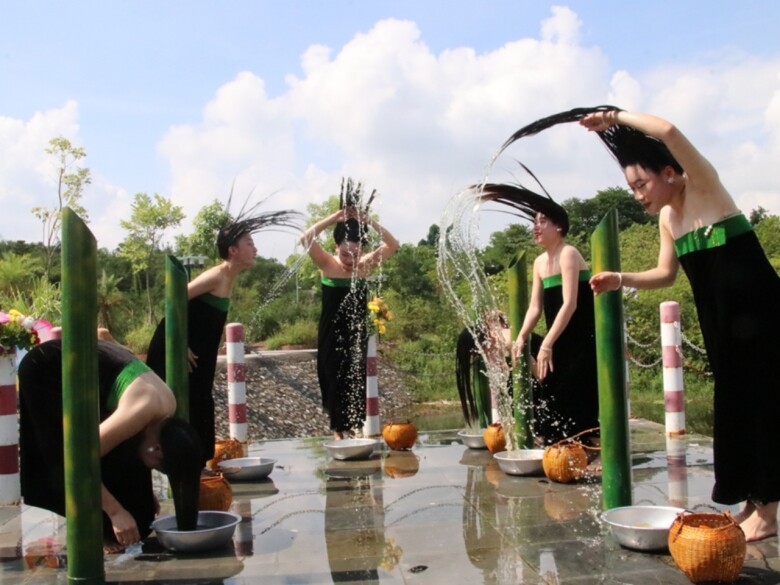
The head-washing ritual is not merely a spiritual practice but also an opportunity for family members to gather and share the joy of the year’s end.
Today, the Head-Washing Ritual has become more than a traditional ceremony; it has evolved into a cultural highlight that attracts interest from near and far, contributing to the promotion of the unique cultural identity of the White Thai people in Lai Châu.
Red Paper Custom for Good Luck
For the Cao Lan people in Phú Thọ, the Lunar New Year celebrations span from the 25th day of the twelfth lunar month to the 15th day of the first lunar month. Each evening before bedtime during this period, the household head lights incense on the ancestral altar, inviting their ancestors to join in the festive celebrations with their descendants.
The moment just before the Lunar New Year’s Eve holds significant importance in the spiritual beliefs of the Cao Lan people. On this day, they wake up early to clean their houses thoroughly before performing the “Chí dịt” custom of pasting red paper around their homes.
Prior to the New Year, families prepare red paper and invite a shaman or village elder to write auspicious wishes in Nôm Dao or Han characters. These wishes typically express hopes for good luck, health, abundant harvests, and success for the younger generations.
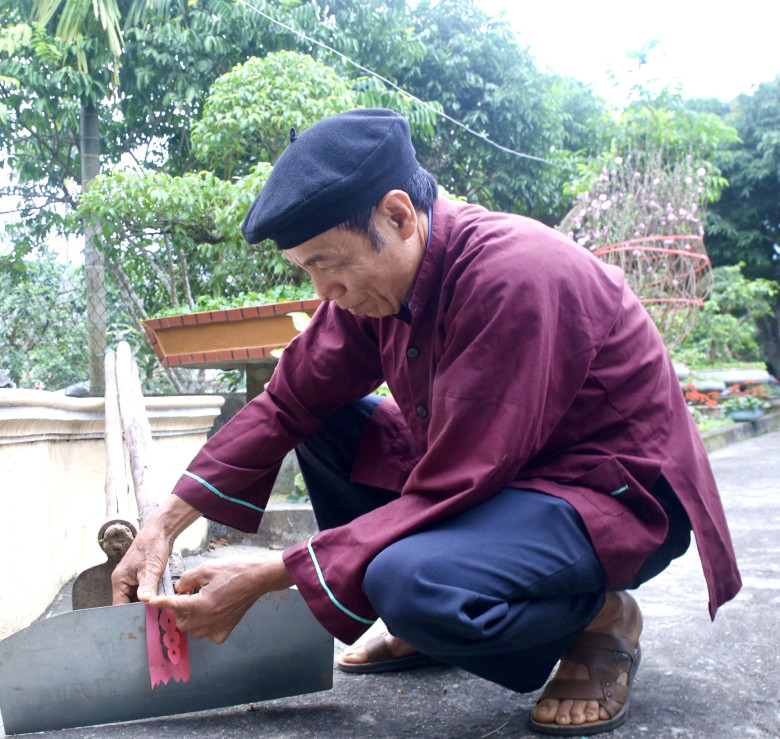
The red paper is pasted in various places around the house: on the main door, windows, ancestral altar, and even in the livestock pen. Each location holds a specific significance, such as warding off evil spirits when pasted on doors and expressing reverence for ancestors when placed on the altar.
This custom of pasting red paper not only adds festive cheer to the New Year celebrations but also symbolizes the community’s faith and aspirations for a brighter future, reflecting the unique cultural beauty of the Cao Lan people.
Worshipping a Bowl of Still Water
Among the Pà Thẻn people, the custom of worshipping a bowl of still water on their ancestral altar holds a sacred place in their spiritual culture. This bowl of water is not merely an offering but also symbolizes the profound connection between people, their ancestors, and nature.
In the belief system of the Pà Thẻn, the bowl of still water represents the vast ocean, the source of life, and the abode of their ancestors’ souls and those of their kin. A plate is always placed over the bowl to preserve its purity, and this water is never allowed to dry up. Should the water evaporate, the family is thought to face misfortune, illness, or bad luck.
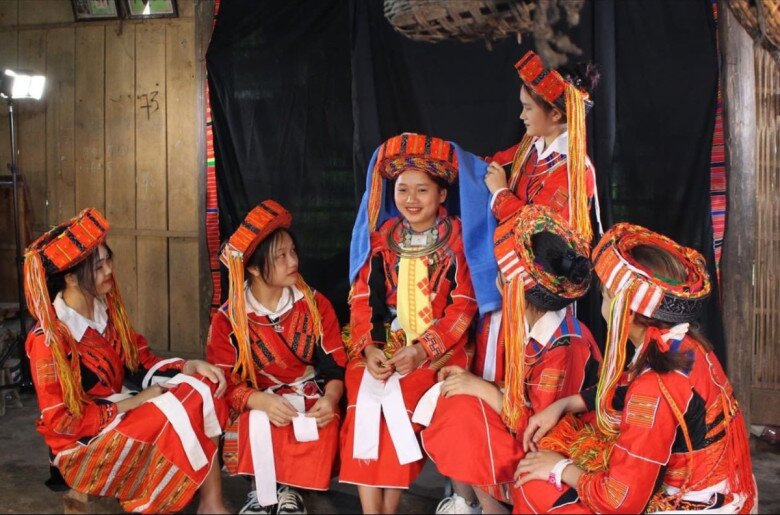
The custom of worshipping a bowl of still water not only showcases the deep spiritual life of the Pà Thẻn people but also serves as a living testament to the harmonious coexistence of humans, their ancestors, and nature within their cultural fabric.
As the house doors are tightly shut, the head of the household carefully lowers the bowl of water, cleanses it, fills it with fresh water, and performs the New Year’s Eve rituals. This sacred moment bridges the old and new years, carrying prayers for health, peace, and good fortune.






























